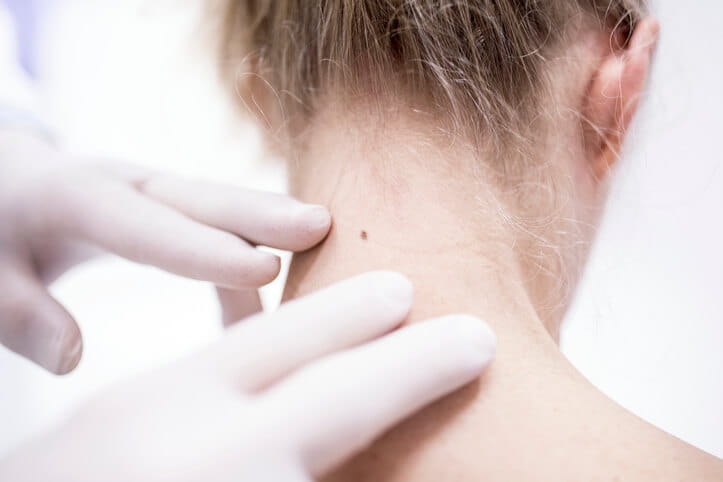Don’t Delay Your Care
If you have a suspicious mole, time if of the essence. Find a primary care provider near you to seek evaluation.
Find a Provider
As the weather warms up, and we shed our winter layers, many of us may be taking a closer look at our skin – and the damage we may have caused in summers past. But it’s often hard to tell whether that mole or dark spot is cause for concern or just a benign imperfection.
There are three primary forms of skin cancer: basal cell carcinoma, squamous cell carcinoma and melanoma. All require medical attention, but of the three, melanoma is the most serious. When detected early, melanoma can be treated successfully. If not discovered at an early stage, melanoma can spread to other parts of the body and can be fatal.
Melanoma develops in pigment cells called melanocytes. Since most of these cells are in the skin, that is where melanoma typically occurs. However, it can also develop in the eyes and more rarely in the nasal passages, mouth, vagina and anus.
In most cases (greater than 70 percent, according to the American Melanoma Foundation), melanomas form near or in an existing mole or dark patch on the skin. Congenital moles (or “birthmarks”) can also develop into melanomas.
Most moles are harmless. New moles and moles that change shape, however, are cause for closer inspection. A helpful memory aid when assessing a mole is to review the “ABCDEs.” These warning signs that a mole, sore or unusual skin patch may be a melanoma are:
A – Asymmetry. One half of the mole is not the same as the other.
B – Border irregularities. The edges of the mole are not well defined, and instead are notched, ragged or blurred.
C – Color inconsistencies. The mole contains multiple colors or different shades of the same color rather than having a uniform color.
D – Diameter larger than 6 millimeters across (about ¼ inch – the size of a pencil eraser). Melanomas can be smaller than this, but most are this size or larger.
E – Evolving. The mole changes shape, size or color.
A good practice is to review all areas of your body at least monthly. The American Melanoma Foundation encourages people to note and track all the markings on their body. Another effective way to keep a record of a suspicious mole or skin patch is to take periodic photos so you can detect any change in its appearance.

Regular self-exams are key to catching melanomas early, when it can be successfully treated. If you feel that a mole meets any of the ABCDEs, it is important to talk with your healthcare provider promptly. If the spot is not a melanoma, the conversation can put your mind at ease. If it is cancerous, you can get the treatment you need to eliminate it.
Skin cancer is the most common form of cancer in the United States and melanoma, the most dangerous type, causes the most deaths. However, if caught and treated early, before it advances and spreads to other parts of your body, melanoma can almost always be cured.
If you have a suspicious mole, time if of the essence. Find a primary care provider near you to seek evaluation.
Find a Provider